When your kidneys start to fail, they don’t just stop filtering waste-they also lose their ability to keep your blood’s acid levels in check. This leads to metabolic acidosis, a hidden but dangerous condition that accelerates kidney damage, breaks down muscle, and weakens bones. In people with chronic kidney disease (CKD), especially stages 3 to 5, metabolic acidosis isn’t rare-it’s common. About 42% of those with stage 5 CKD have it. Yet, many never get tested, let alone treated. The fix? Often, it’s as simple as correcting low bicarbonate levels. But it’s not just popping a pill. Getting it right means understanding the trade-offs, the side effects, and the real-world challenges patients face every day.
What Is Metabolic Acidosis-and Why Does It Matter in CKD?
Metabolic acidosis happens when your blood becomes too acidic. Your body normally keeps its pH between 7.35 and 7.45. When serum bicarbonate drops below 22 mEq/L, that balance breaks. In healthy kidneys, excess acid is flushed out, and bicarbonate is regenerated. But when kidney function declines, acid builds up. That’s why metabolic acidosis is so common in CKD: the organ that should fix the problem can’t.
This isn’t just about numbers on a lab report. Left untreated, acidosis speeds up the decline of your eGFR-the measure of how well your kidneys filter blood. Studies show that for every 1 mEq/L drop in bicarbonate, the risk of kidney failure rises by 10%. It also triggers muscle wasting, bone loss, and increases your chances of heart problems. The National Kidney Foundation says correcting this isn’t optional-it’s a core part of slowing CKD progression.
The Gold Standard: Sodium Bicarbonate
Sodium bicarbonate, the same compound found in baking soda, is the most widely used treatment. It works fast: within weeks, it can raise serum bicarbonate by 4 to 6 mEq/L. A major 3-year trial with 740 CKD patients found that those taking sodium bicarbonate (0.5-1.0 mEq/kg/day) slowed their eGFR decline by nearly 6 mL/min/1.73m² compared to those who didn’t. That’s the difference between reaching kidney failure in 5 years versus 10.
But there’s a catch: sodium. Each 650mg tablet contains 305mg of sodium. A teaspoon of baking soda? That’s 50 mEq of bicarbonate-and over 6,000mg of sodium. For someone with high blood pressure or heart failure, that’s dangerous. One study found CKD patients on sodium bicarbonate had a 32% higher risk of hospitalization for heart failure than those on calcium citrate. The FDA added a black box warning in 2018: don’t use it if you have fluid overload or heart disease.
Alternatives to Sodium Bicarbonate
If sodium is a problem, what else works?
- Calcium citrate: Offers alkali without sodium. Each 500mg tablet gives 120mg of elemental calcium. But too much calcium raises the risk of kidney stones-studies show a 27% higher chance in long-term users. It’s also bulky: patients often need 4-6 pills a day.
- Potassium citrate: Good for lowering urine calcium and preventing stones, but risky in CKD. About 18% of patients on potassium supplements develop dangerous hyperkalemia (high potassium). The KDOQI guidelines warn against it in stage 3b-5 CKD unless potassium is already low.
- Sodium citrate (Shohl’s solution): Liquid form, easier to dose, but tastes awful. Many patients mix it with orange juice, adding sugar they shouldn’t have. One Reddit user said, “It’s like drinking medicine-flavored soda.”
None of these are perfect. But they’re better than doing nothing. A 2020 study in Nephrology Dialysis Transplantation showed that calcium citrate was safer for patients with heart issues, even if it didn’t raise bicarbonate quite as high.
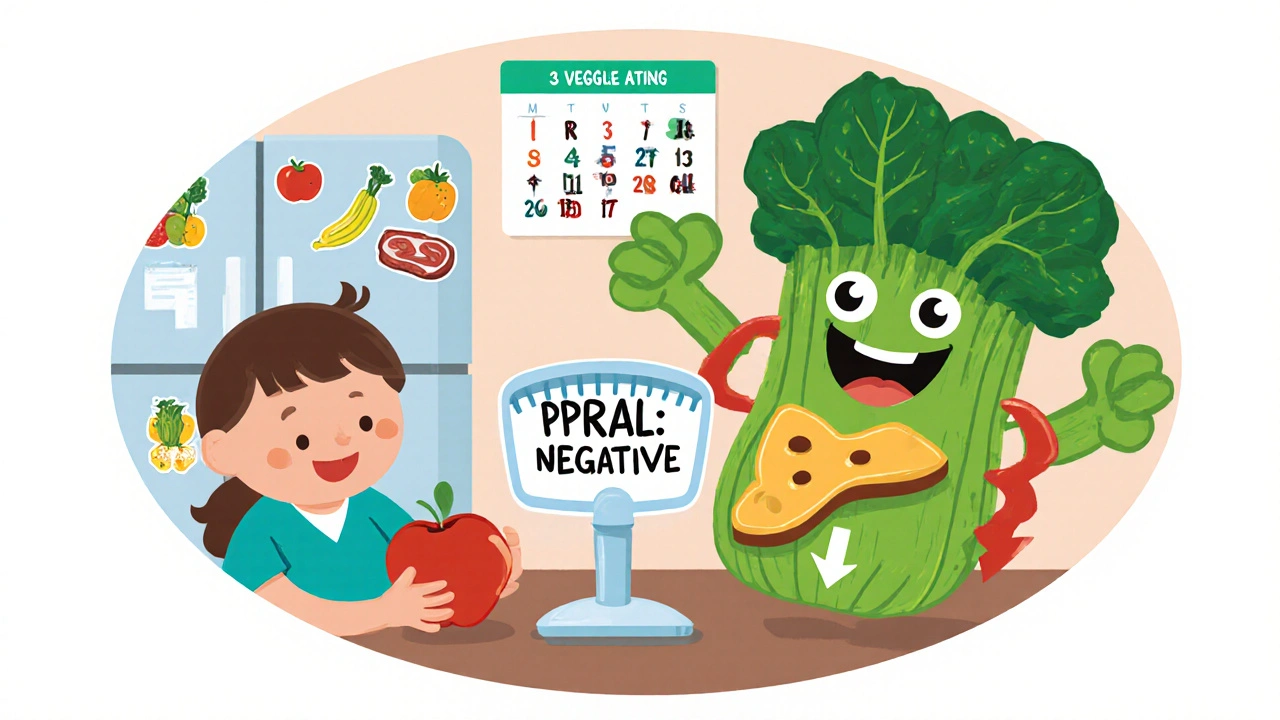
The New Hope That Failed: Veverimer
For years, drugmakers hoped veverimer-a non-absorbed polymer that traps acid in the gut-would be the breakthrough. It was sodium-free, didn’t affect potassium, and showed promise in early trials. Phase 2 results showed a 4.3 mEq/L rise in bicarbonate at 12 weeks. But the phase 3 trial in 2021 missed its target. The difference from placebo was just 2.07 mEq/L-statistically insignificant. The FDA didn’t approve it. Tricida Inc. plans to resubmit in 2024, but for now, it’s off the table.
That leaves patients with older, imperfect tools. No new drugs have been approved for chronic metabolic acidosis in CKD since 2023. The market is still dominated by generic sodium bicarbonate tablets and baking soda.
Diet: The Underused Tool
Here’s something most patients don’t know: your food is either adding acid or fighting it. Meat, cheese, and grains are acid producers. Fruits and vegetables? They’re alkaline. A 100g serving of chicken adds 9.5 mEq of acid. A 100g apple? It removes 2.2 mEq.
Studies show that shifting to 5-9 daily servings of fruits and vegetables can cut dietary acid load by 40-60 mEq/day. One patient at Cleveland Clinic raised her bicarbonate by 3.5 mEq/L in six months just by swapping meat for beans, spinach, and berries. No pills. No side effects. Just food.
But it’s hard. Most people don’t know which foods are acidic. A survey found only 35% of CKD patients hit the target of a negative PRAL score (Potential Renal Acid Load). That’s why renal dietitians are critical. Two or three sessions can teach you how to balance your plate. The American Society of Nephrology recommends trying dietary changes for 3 months before starting medication.
Who Gets Treated-and Who Doesn’t
Despite clear guidelines, only 43% of eligible CKD patients with low bicarbonate get alkali therapy. Why?
- Pill burden: Patients take an average of 4.2 tablets a day. That’s a lot to remember.
- Taste: Liquid forms are unpleasant. One survey found 41% of patients quit because of the flavor.
- Side effects: Bloating, nausea, and cramps are common. One patient on Reddit said, “I take it, but I feel like I’m full of gas all day.”
- Disparities: Black patients are 9% less likely to receive treatment than white patients. Rural patients get it 14% less often than urban ones.
The National Kidney Foundation’s 2022 survey showed that 68% of patients struggled with adherence. That’s not laziness-it’s a system that doesn’t support them.
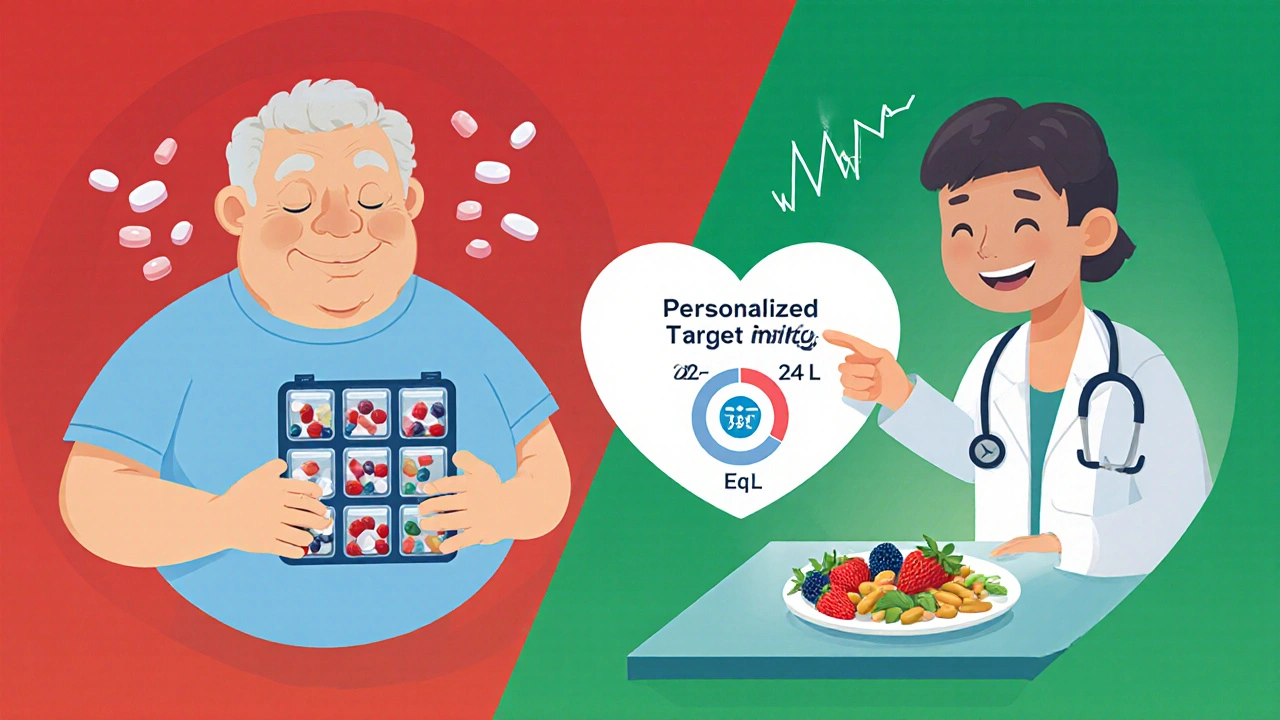
What the Guidelines Say Now
KDIGO (Kidney Disease: Improving Global Outcomes) recommends starting alkali therapy when bicarbonate falls below 22 mEq/L. Their target? 23-29 mEq/L. But the 2024 draft update is changing that. New data suggests even 22 mEq/L still protects the kidneys. So the new range may be 22-29 mEq/L.
But here’s the twist: some studies show a U-shaped risk curve. Too low (below 22) is bad. Too high (above 26) might also be risky-especially in older adults. One 2020 study linked bicarbonate above 26 mEq/L to higher mortality in elderly CKD patients.
So the new thinking is personalization:
- Heart failure? Target 24-26 mEq/L.
- Older, frail, malnourished? 22-24 mEq/L may be enough.
- Younger, no heart issues? Push to 24-27 mEq/L.
It’s not one-size-fits-all anymore.
Monitoring and Practical Steps
Here’s how to get it right:
- Check serum bicarbonate every 3-6 months if stable. Monthly when starting treatment.
- Start with diet: aim for 5-9 servings of fruits and vegetables daily. Reduce meat and processed cheese.
- If bicarbonate stays below 22 mEq/L after 3 months, add alkali.
- Begin with sodium bicarbonate 650mg once or twice daily. Titrate slowly.
- Watch for swelling, high blood pressure, or shortness of breath-signs of sodium overload.
- If side effects hit, switch to calcium citrate or sodium citrate.
- Avoid potassium citrate unless your potassium is low (<3.5 mEq/L).
- Never exceed 1,000mg elemental calcium daily from supplements.
And always talk to your nephrologist before changing anything. What works for one person might hurt another.
The Bigger Picture
Correcting metabolic acidosis isn’t just about a lab value. It’s about keeping you out of dialysis. The National Institute of Diabetes and Digestive and Kidney Diseases estimates that if all eligible CKD patients got proper treatment, the U.S. could prevent 28,000 cases of kidney failure each year. That’s $1.4 billion in savings.
But progress is slow. No branded drugs are approved. Monitoring is inconsistent. Patients are left to navigate a confusing maze of pills, taste, and side effects.
The solution isn’t a new drug. It’s better care: regular testing, personalized targets, diet support, and fewer pills. If you have CKD and haven’t had your bicarbonate checked in over a year, ask your doctor. It’s one of the simplest, most powerful ways to protect your kidneys.
Can baking soda really help with kidney disease?
Yes, but only under medical supervision. Baking soda (sodium bicarbonate) can raise blood bicarbonate levels and slow kidney decline in CKD patients. However, it contains a lot of sodium-about 6,000mg per teaspoon-which can worsen high blood pressure or heart failure. Always use it as prescribed, not as a DIY remedy.
What are the side effects of sodium bicarbonate in CKD patients?
Common side effects include bloating, nausea, and gas. The biggest risk is fluid retention, which can cause swelling, high blood pressure, and heart failure. Each 650mg tablet contains 305mg of sodium. Patients with heart disease or edema should avoid it. Always monitor blood pressure and weight when taking it.
Is potassium citrate safe for people with chronic kidney disease?
Generally, no. Potassium citrate can raise blood potassium to dangerous levels in CKD patients, especially stages 3b-5. About 18% of users develop hyperkalemia (potassium >5.0 mEq/L), which can cause heart rhythm problems. It’s only considered if potassium is low and under close monitoring. Most guidelines recommend avoiding it unless absolutely necessary.
How do fruits and vegetables help with metabolic acidosis?
Fruits and vegetables are naturally alkaline and reduce the body’s acid load. Foods like apples, spinach, and sweet potatoes have a negative Potential Renal Acid Load (PRAL), meaning they help neutralize acid. Eating 5-9 servings daily can lower dietary acid by 40-60 mEq/day, which can raise serum bicarbonate by 1-3 mEq/L-enough to slow kidney decline when combined with other treatments.
How often should CKD patients check their bicarbonate levels?
Every 3 to 6 months if stable. When starting or adjusting alkali therapy, check monthly until levels stabilize. KDIGO guidelines recommend checking at least annually, but more frequent testing is needed during treatment changes. If you’re on sodium bicarbonate, your doctor should also monitor your blood pressure and weight.
Why isn’t there a FDA-approved drug for metabolic acidosis in CKD?
Most treatments are generic, low-cost, and off-patent-like sodium bicarbonate and calcium citrate. Drug companies have little financial incentive to develop new branded drugs for this condition. Veverimer, a promising candidate, failed its phase 3 trial in 2021. Without strong profit potential, few companies are investing in approvals. That’s why treatment still relies on old, inexpensive options.
Can metabolic acidosis be reversed in CKD?
It can’t be fully reversed if kidney damage is advanced, but it can be controlled. Correcting low bicarbonate slows the rate of kidney function decline, reduces muscle loss, and protects bones. Studies show patients who maintain bicarbonate above 22 mEq/L have a 23% lower risk of reaching kidney failure. It’s not a cure, but it’s one of the most effective ways to buy time.

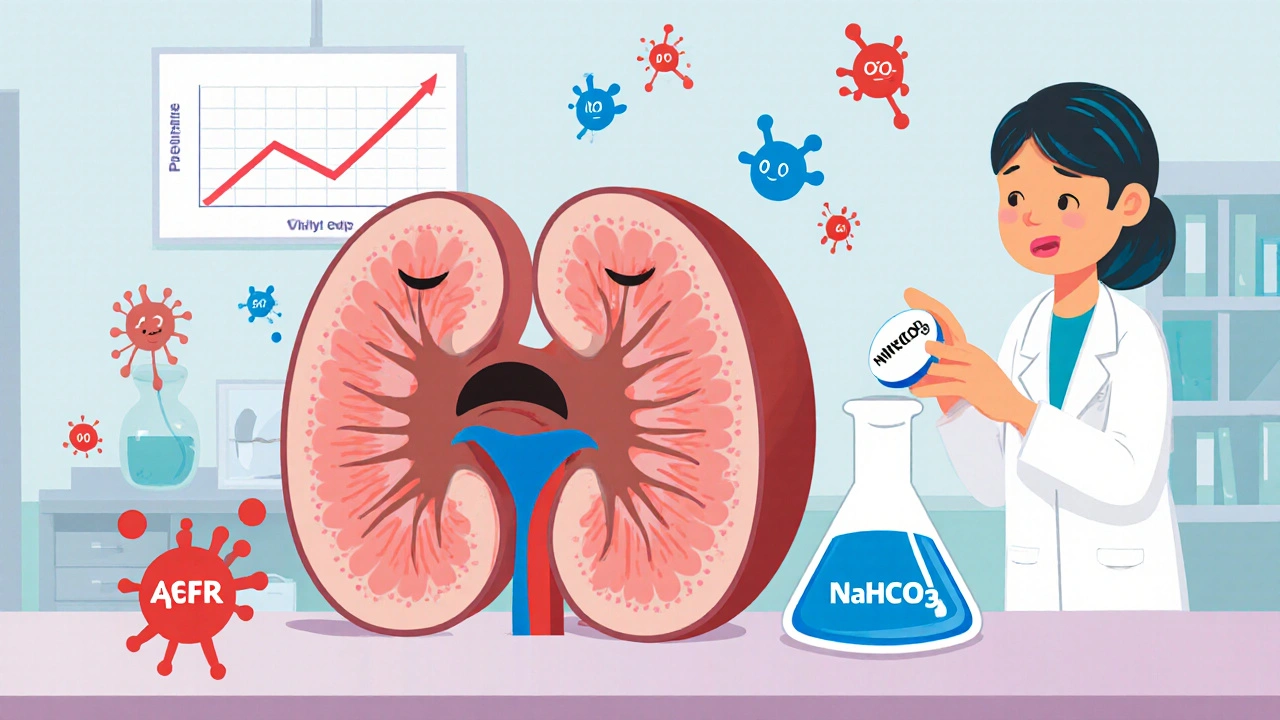
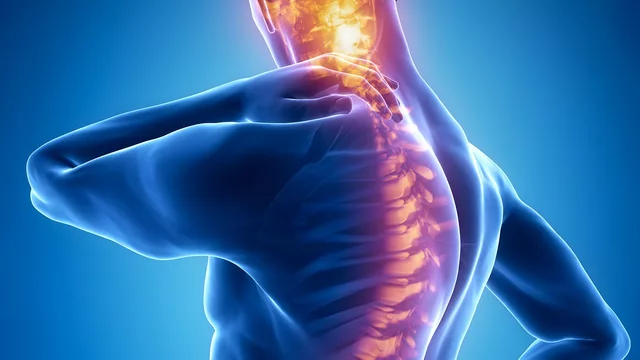
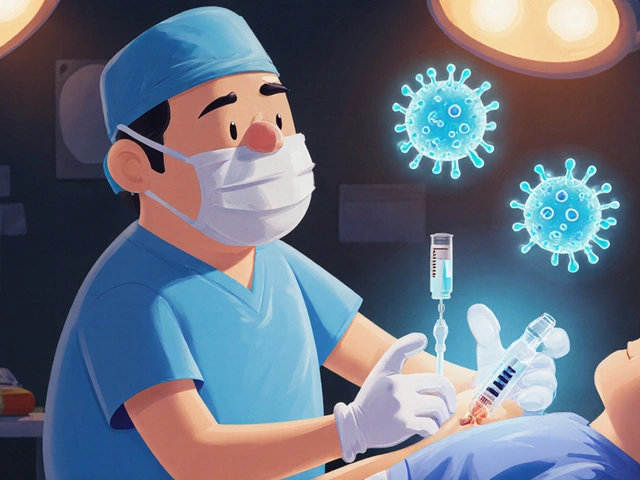
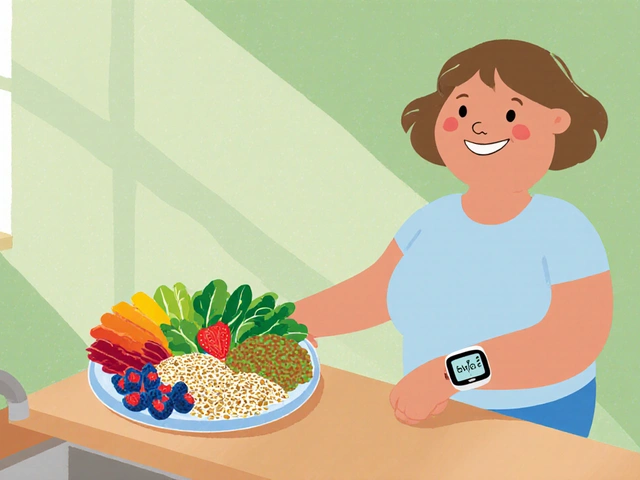
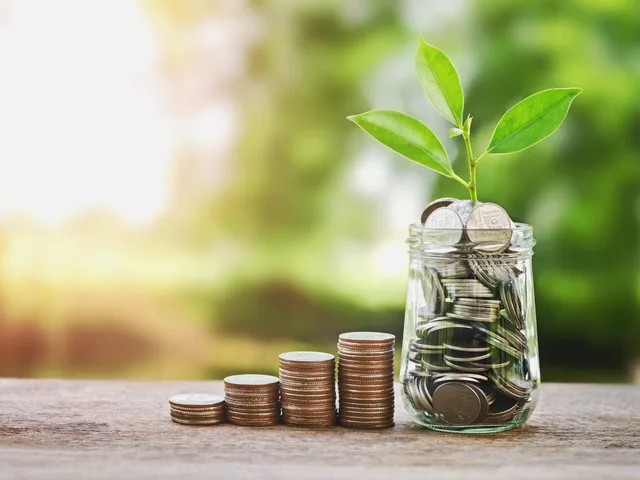

Comments(14)